Box Tree Damage
The larvae (caterpillars) of the Box Tree Moth can cause extensive damage to Box Trees in a relatively short period of time. Young neonate larvae (L1-L4) damage the surfactes of leaves by scarping feeding (stripping off the leaf surface). This leads to water loss and drying out of the leaves. Larger (L5-L7) caterpillars eat the leaves whole and thus can defoliate entire trees when sufficient numbers of caterpillars are present. During intense infestations, defoliation can be complete before the larvae have fully developed. It seems that caterpillars then pupate early if no food is left (own observation). However, many of the pupa result in weak moths after metamorphosis, many of which have too little hemolymph to pump up their wings.
A defoliated Box Tree can usually be saved if it is watered regularly, but even defoliated trees are used for oviposition, meaning that they can only poorly recover unless measures are taken to combat the caterpillars..
VIDEO DOCUMENTATION:
IMAGES:
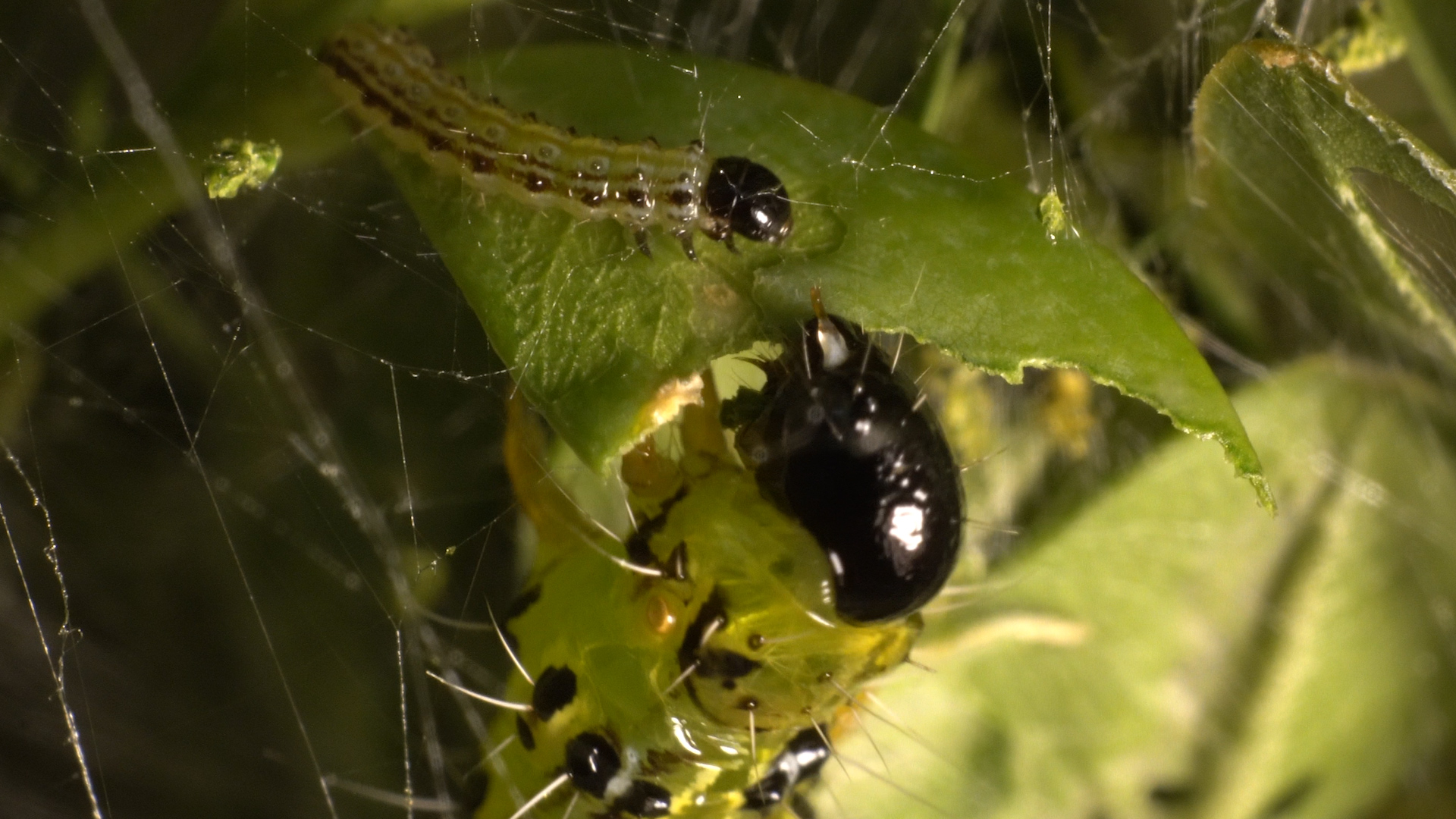
This image serves as a reminder of the two forms of feeding performed by Box Tree Moth larvae. The smaller (L1-L4) larvae feed by scarping the surface of the leaf, whilst larger (L5-L7) larvae eat the whole leaf.
About 120 L4-L7 caterpillars, collected in the neighbourhood, were placed on this box tree. These were sufficient to completely defoliate the 60cm high Box Tree. Between the first and last picture lie 34 days.
This Box-Tree was seeded with several clutches of Box Tree Moth eggs (in total about 250) from my breeding chamber. The images show the effect of scarping damage. Due to the extent of damage and the associated significant water loss, the whole tree eventually dries out and dies (Note: the tree was hardly watered). As a result, the dry leaves were inpalatable for the larger larvae and were not stripped off the tree. The larger larvae mainly starved as a result. 6 weeks lie between the first and last image. The tree was so badly dried that it did not recover. This shows how this kind of damage can be fatal to the trees in periods of drought.
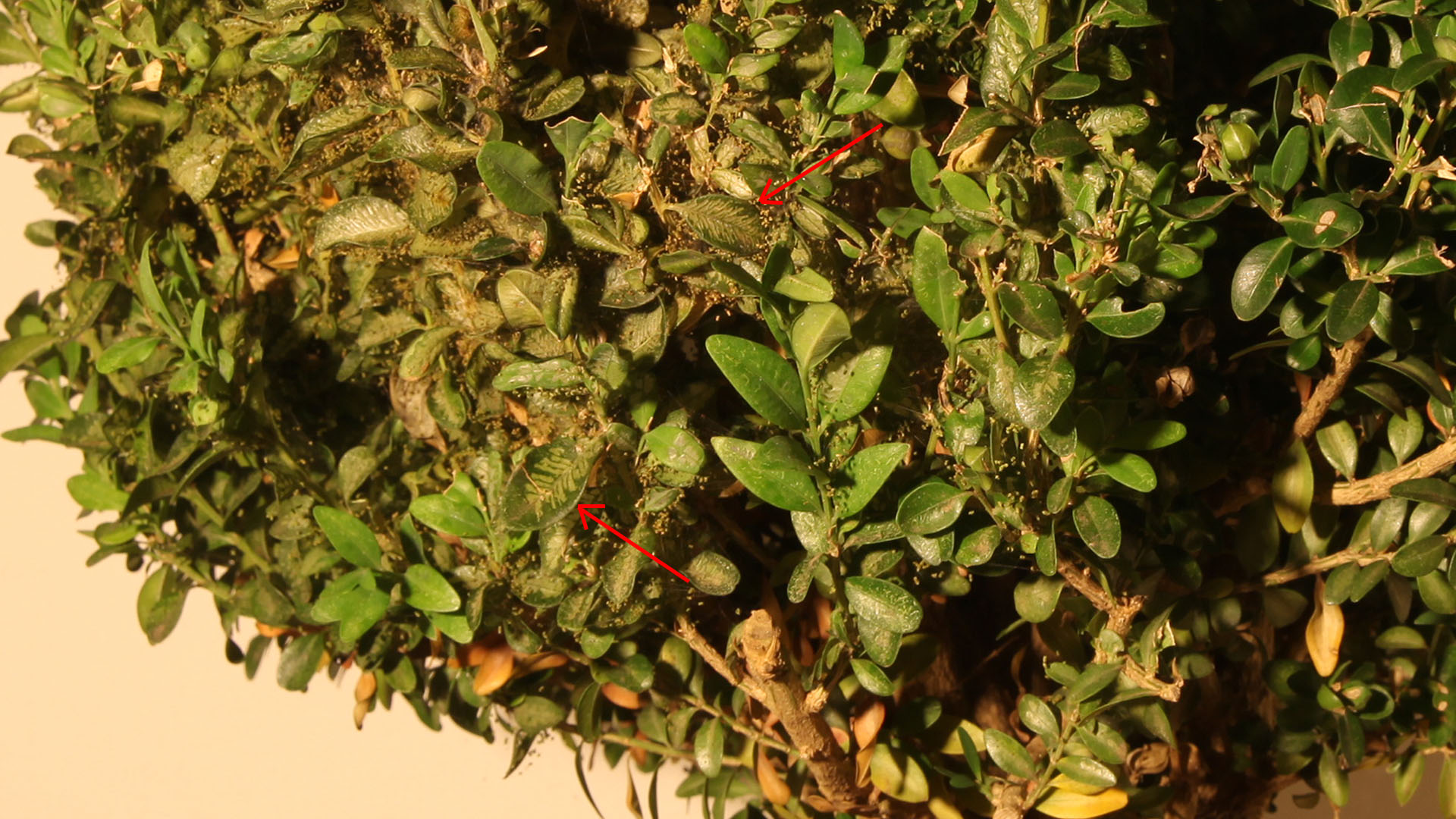
This image is an enlargement from the middle image in the row above. Scarping damage is extensive on the left side (where the eggs were placed). Red arrows mark particularly good examples of the characteristic scarping patterns.
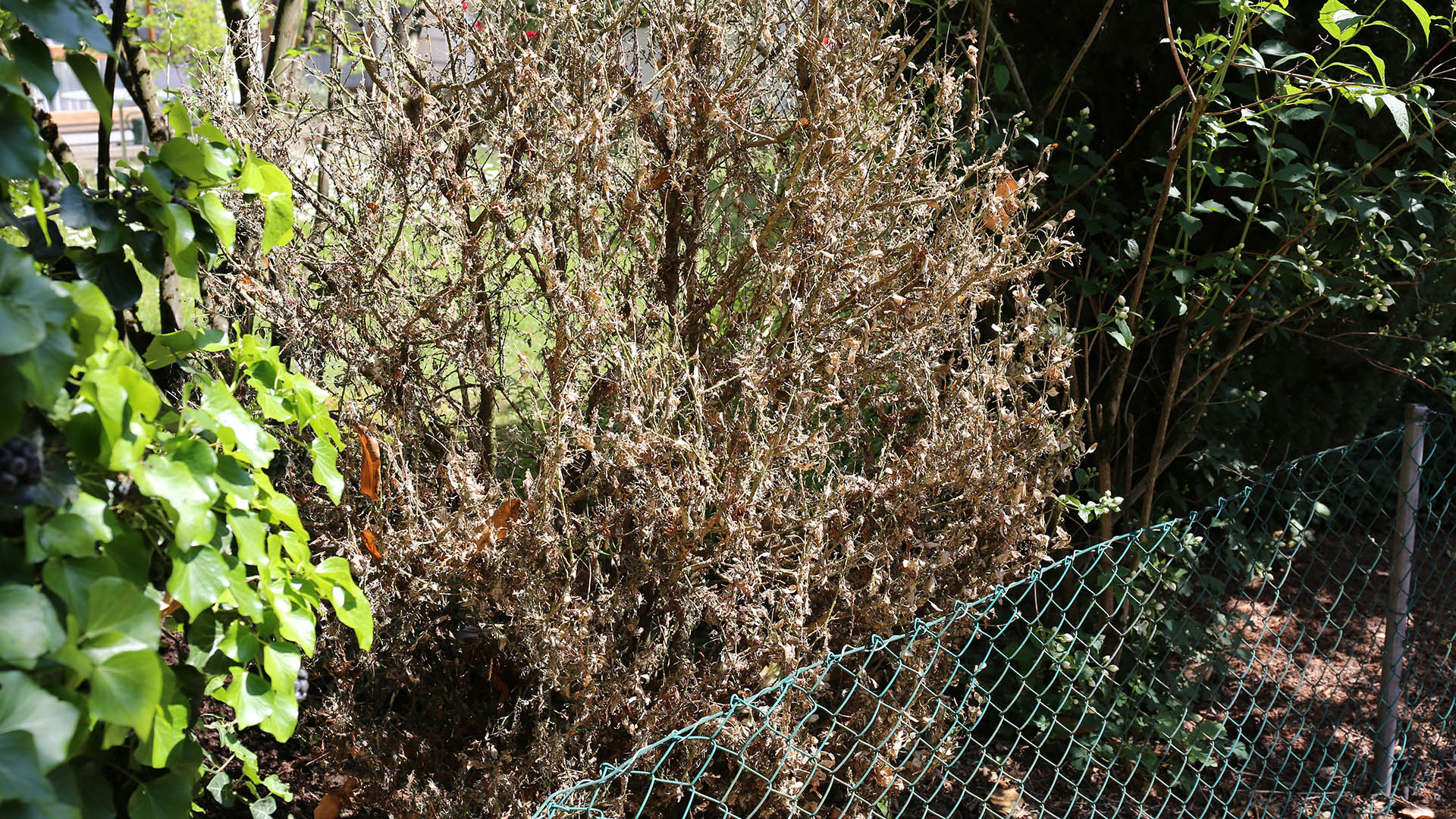
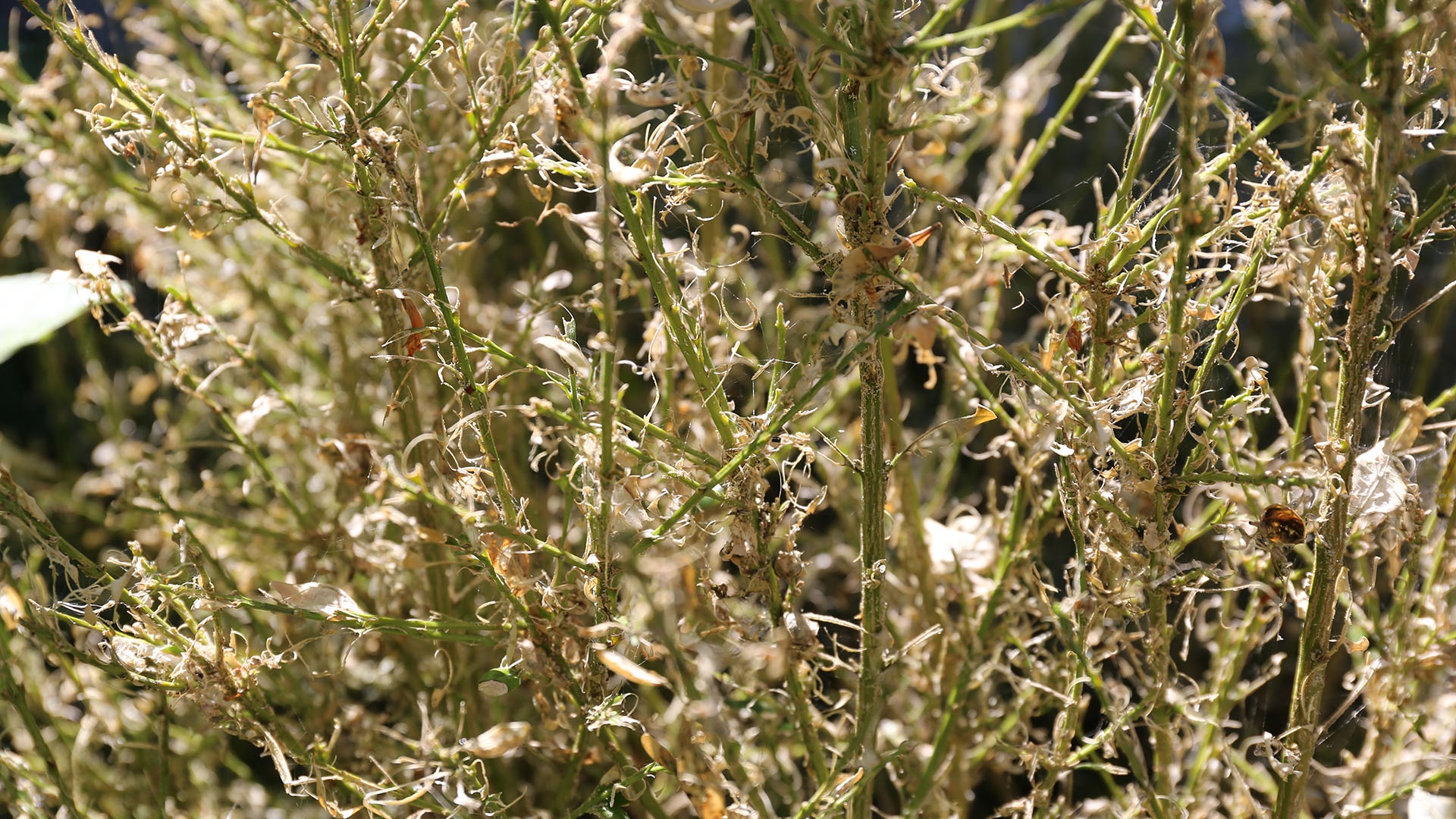
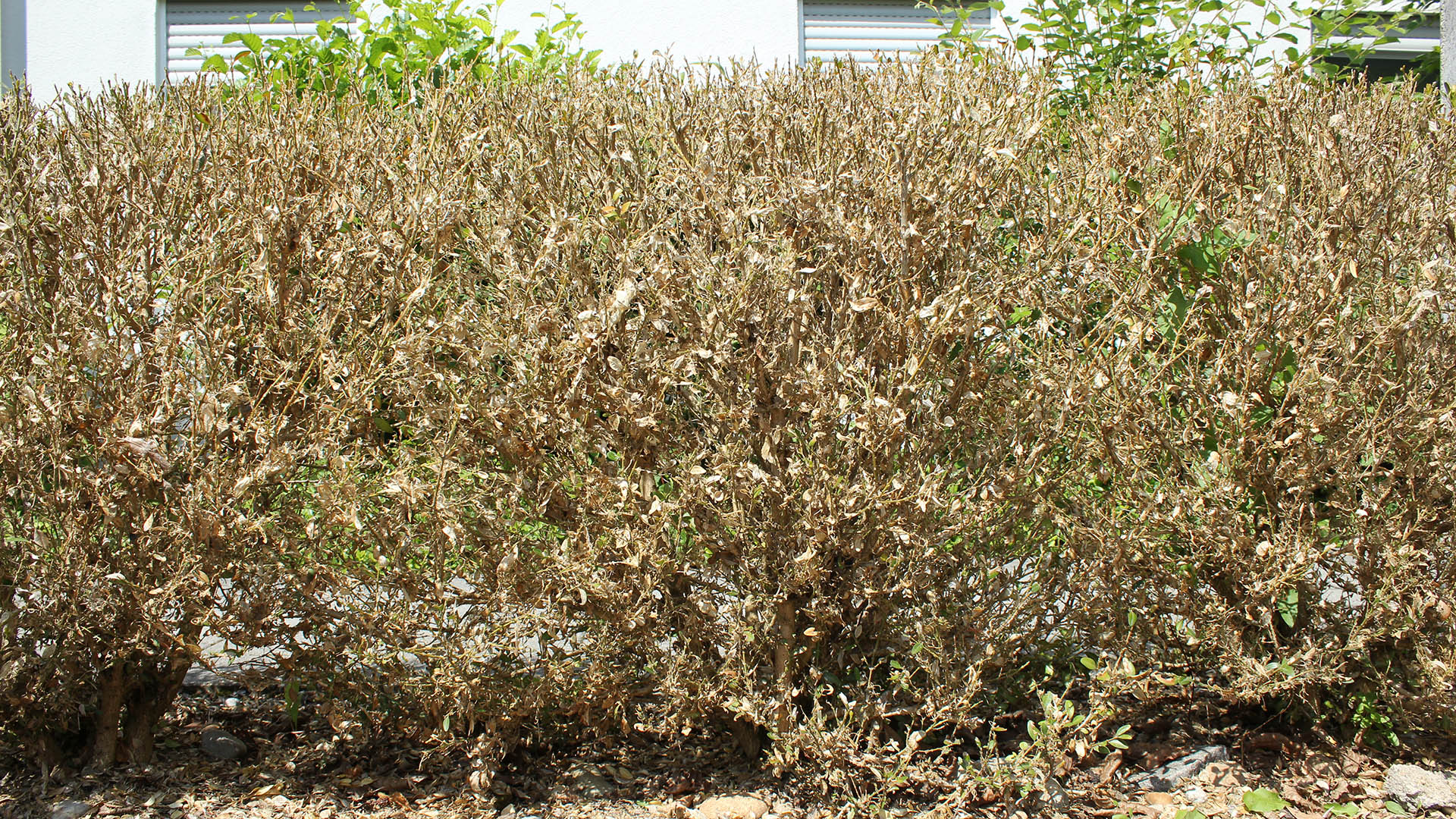
These three images show damage to Box Trees and Box Tree hedges in Munich, Germany. The tree in the top image has since recovered and is being regularly treated. The hedge in the bottom image is one of many that have been removed.
 Home (English)
Home (English)